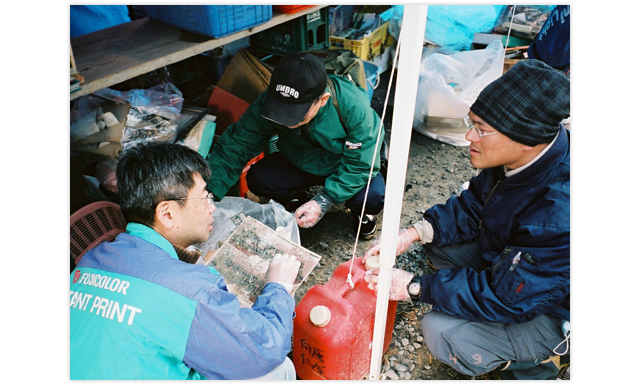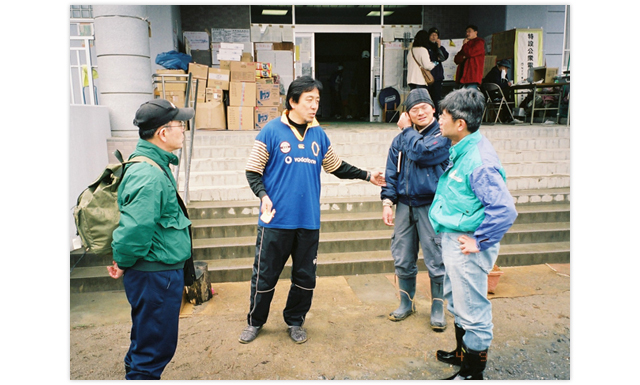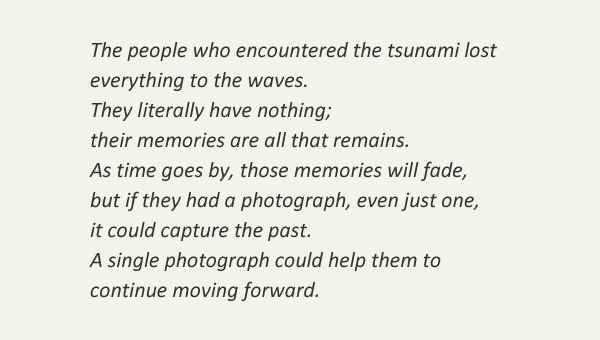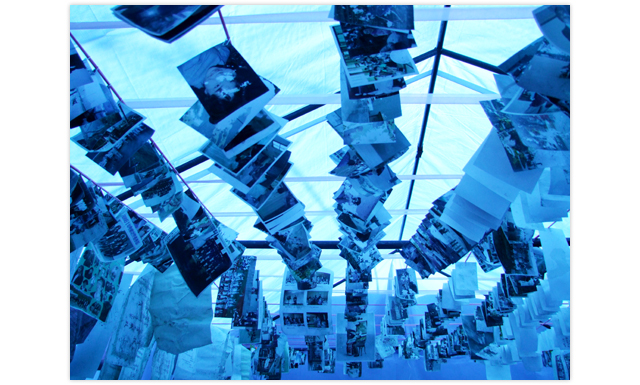
A M7.1 aftershock struck on April 7, resulting in the lifelines to the Tohoku Region being shut down once again. Despite the situation remaining unstable, three of our employees decided to visit for the weekend. On Saturday April 9, they rented a hybrid car (having assumed that gasoline would be scarce) and left Kanagawa at 5am, eventually arrived in Hashikami, Kesennuma City at 1pm.

The first place they visited was Hashikami Junior High School, which had been set up as a temporary shelter. It was also where the man who had previously contacted us, Shinji Takai, was cleaning photographs. The sight of him quietly working away genuinely touched everyone around him. Mr. Takai later introduced one of the leaders of the municipal assembly, who was in change of managing the shelter. His words further reinforced the role of Fujifilm employees.

We later received 3,000 photographs from Mr. Takai that had been temporarily stored in large plastic bags. We had no information: Were they inkjet or gelatin silver? How badly were they damaged? How had they been collected? Nevertheless, he had trusted us with the precious photographs and they soon became invaluable in allowing us to further examine how to process damaged prints. Everything was different to what we were used to, but Mr. Takai's trust gave us a strong sense of responsibility and we worked to save as many of the photographs as possible.

The next day they headed to Shizugawa, Minami-Sanriku to visit the workshop where members of "Omoide-Sagashi Tai" (Memory Search Group) were cleaning photographs. They had been featured on television and in the newspapers, and they worked inside a temporary tent covered with blue tarpaulins, where freshly cleaned photographs were hung up to dry. A tremendous number of photographs and albums were still waiting to be cleaned, and as most of the volunteers didn't have technical training in photography and supplies were scarce, they were having to work on a trial-and-error basis. It was here that a very important fact was revealed:





